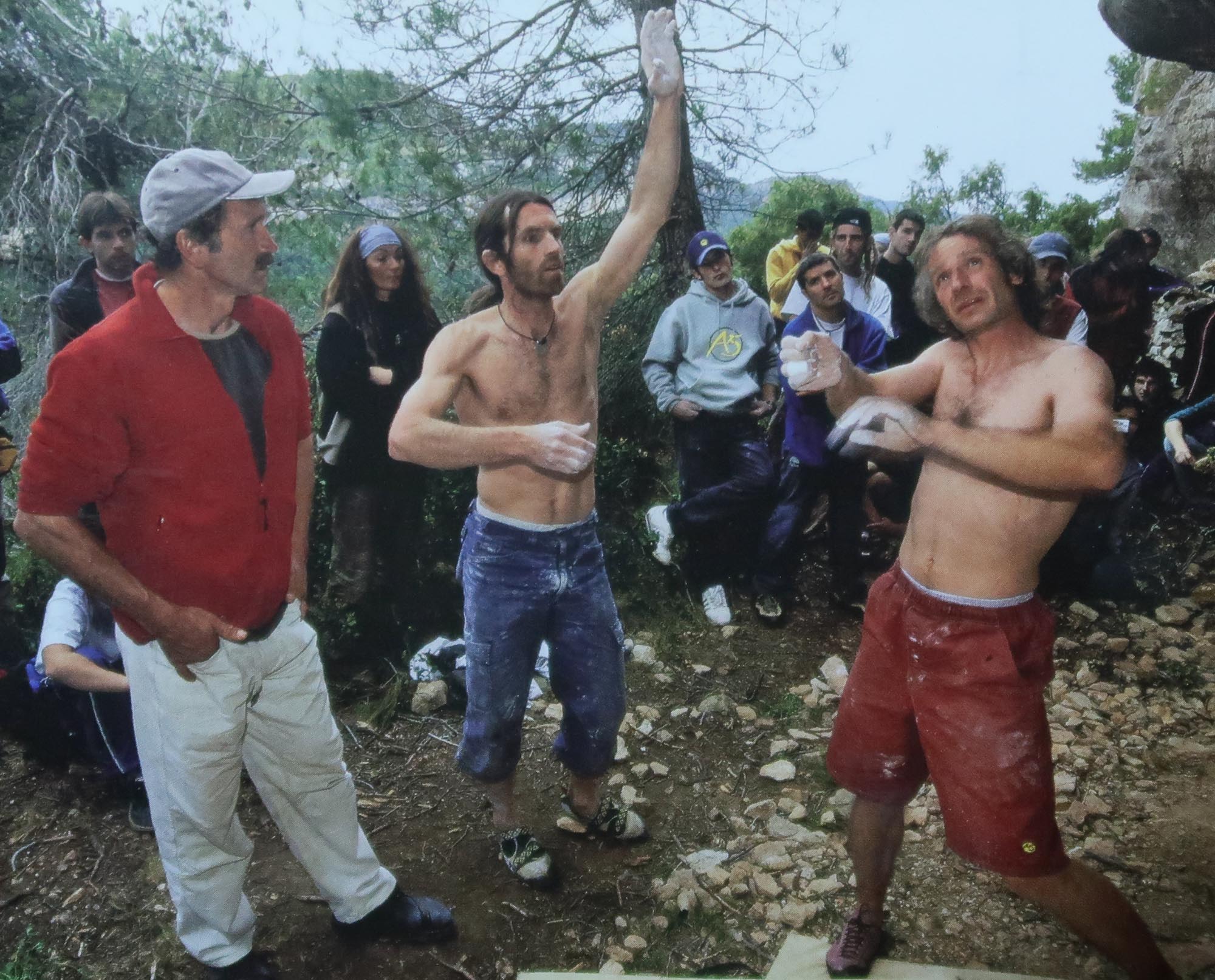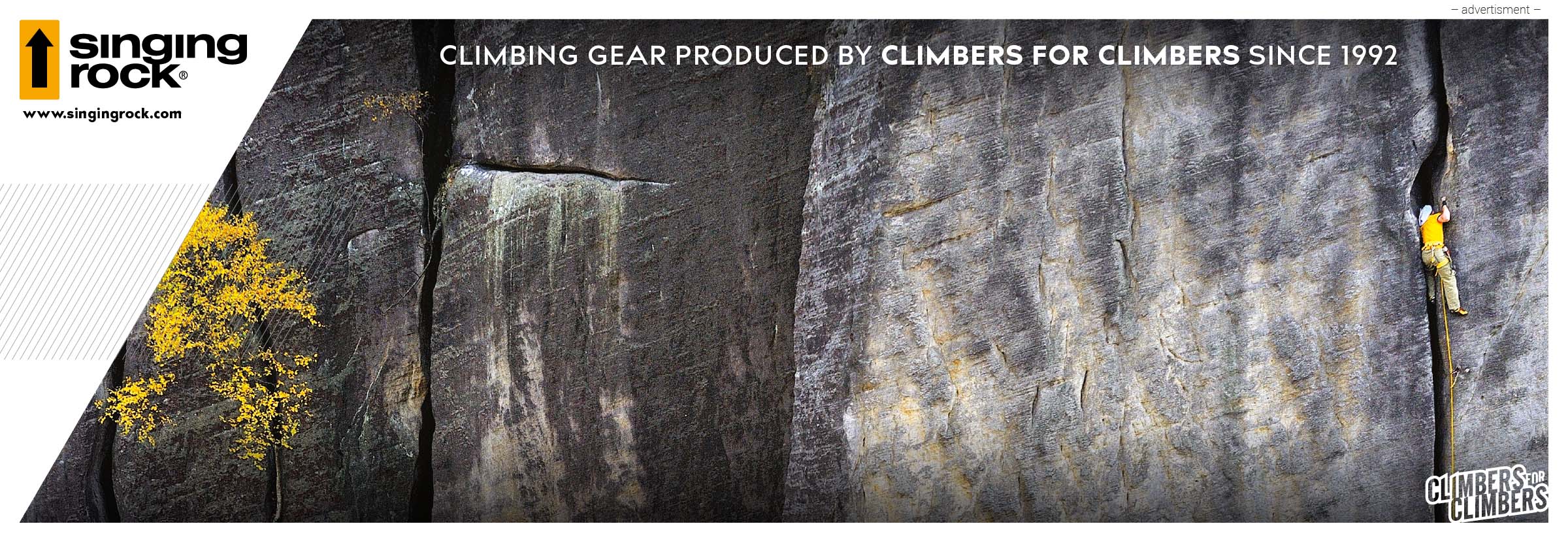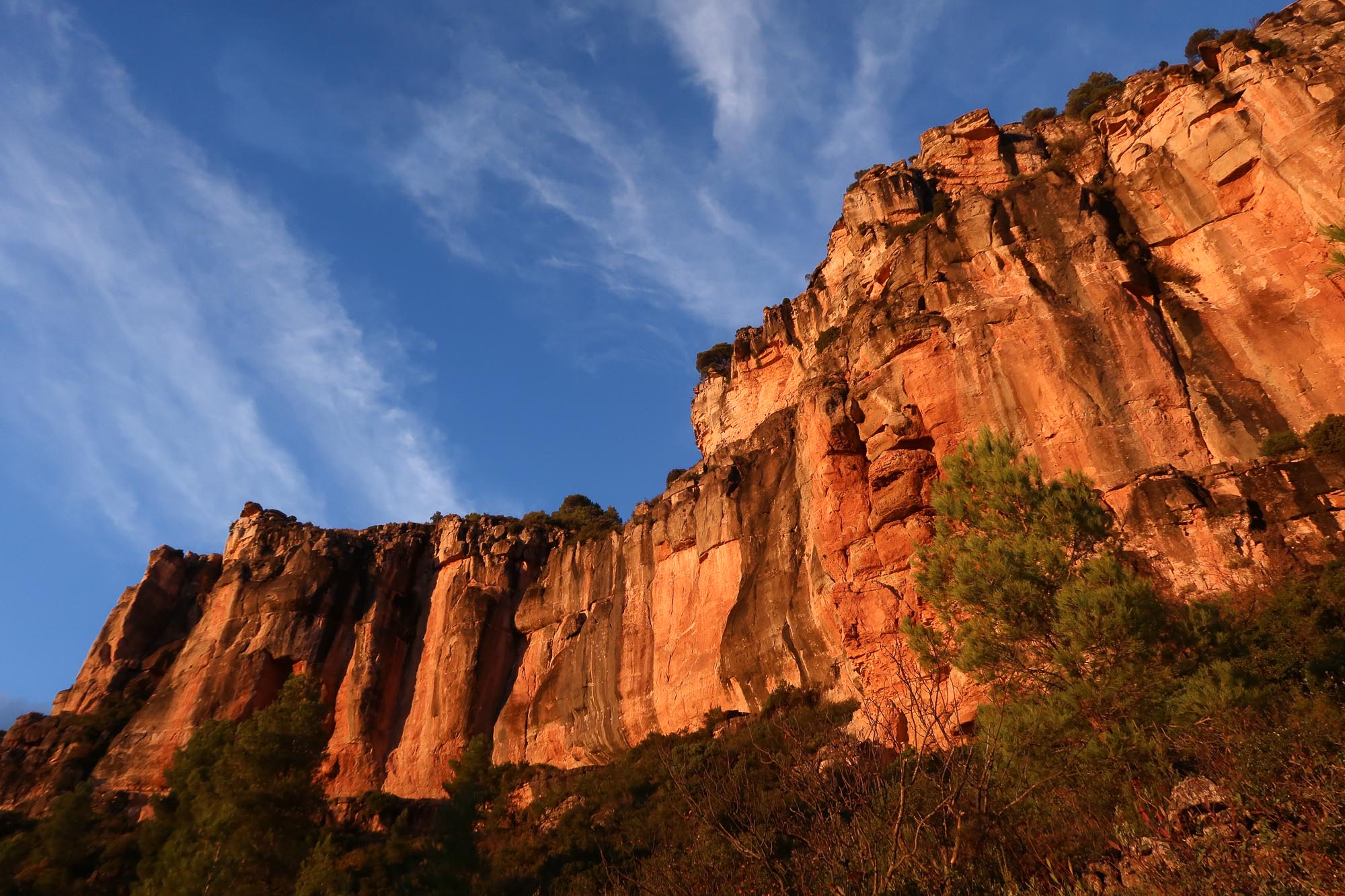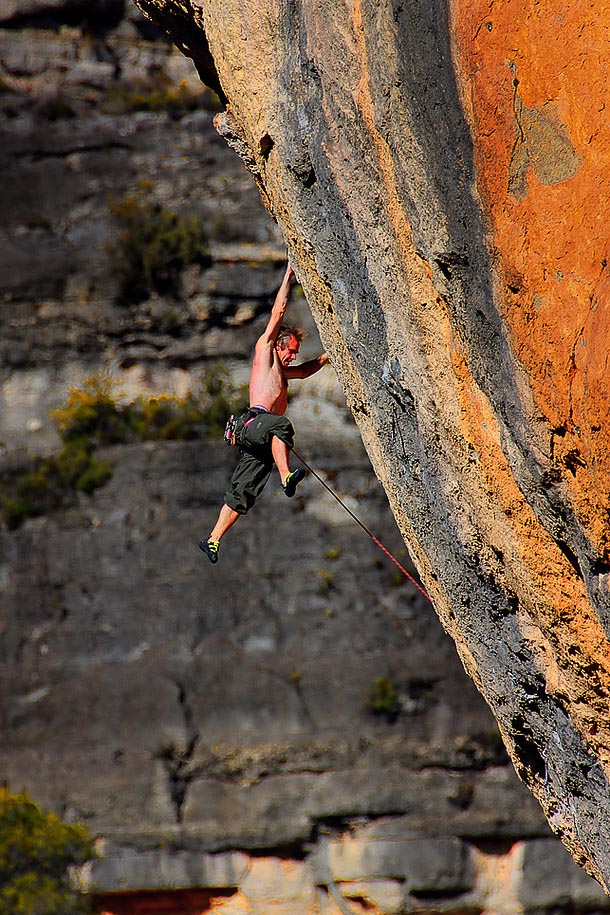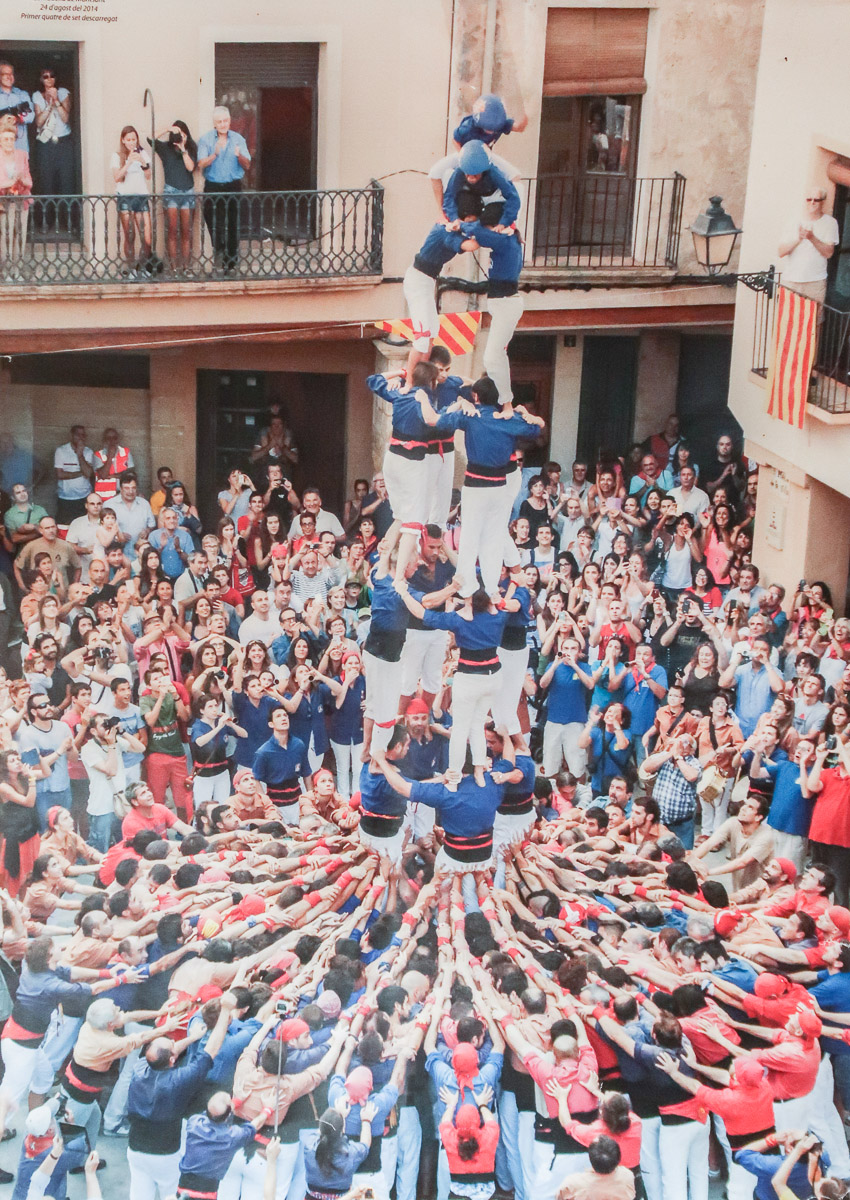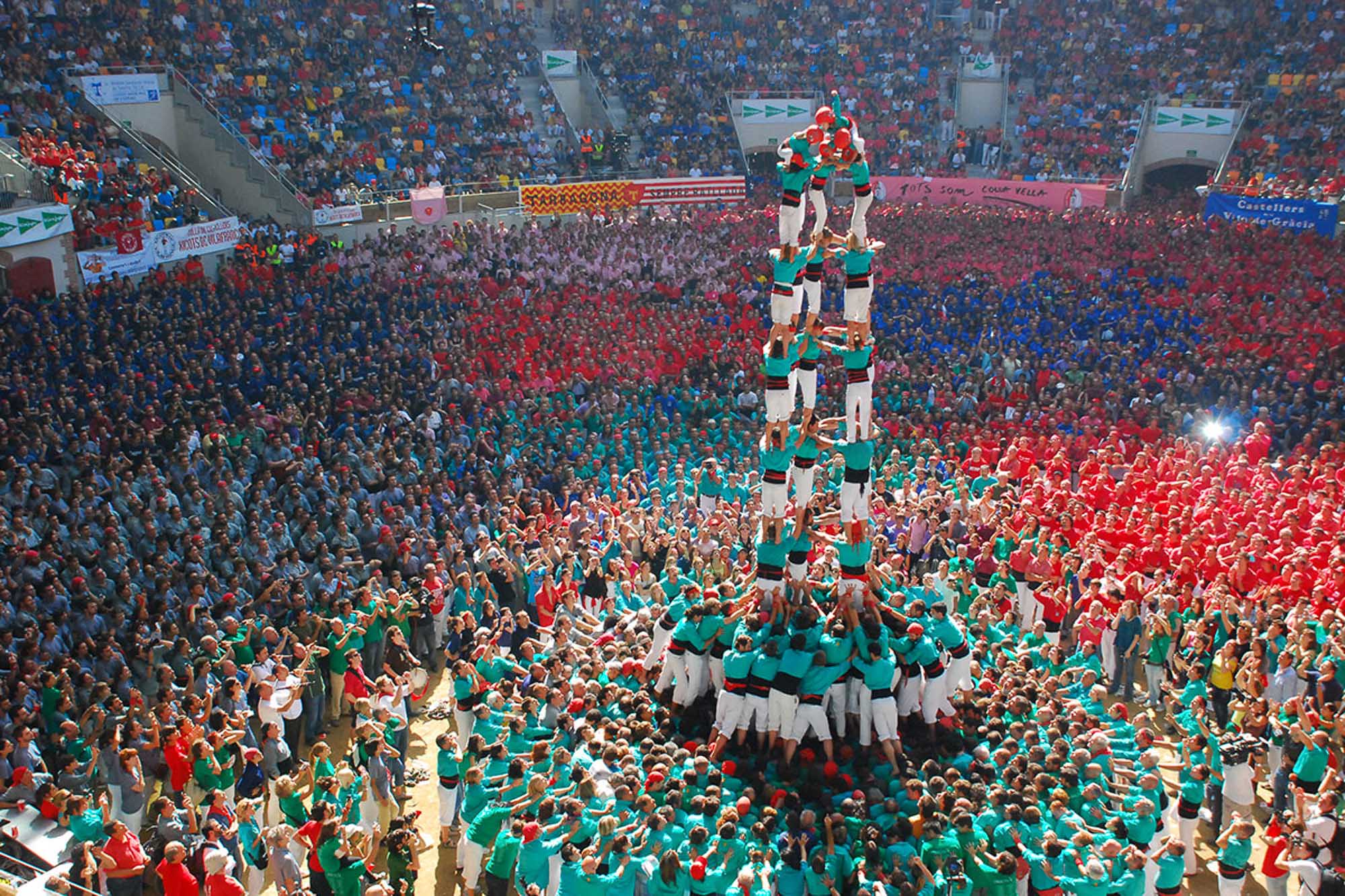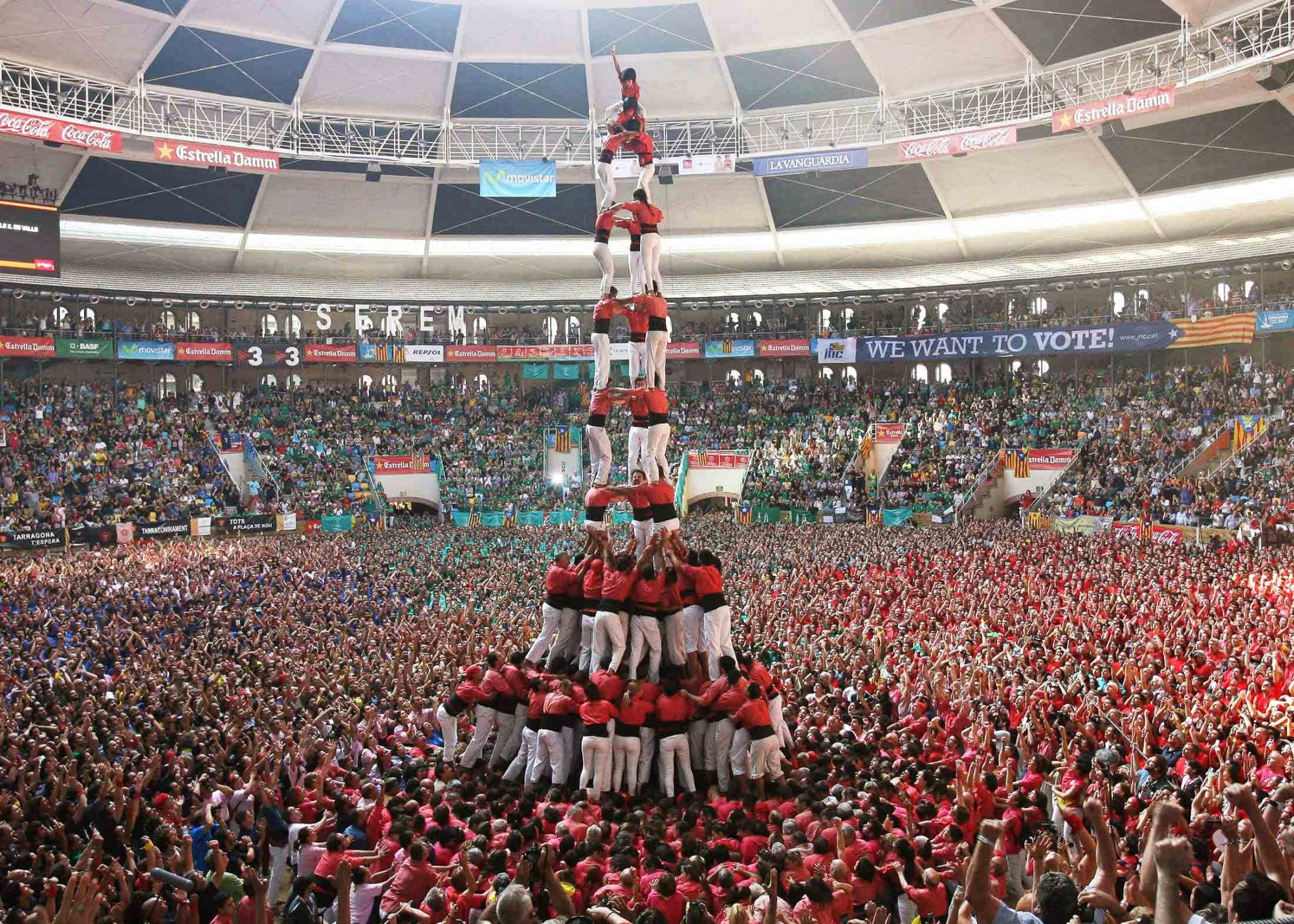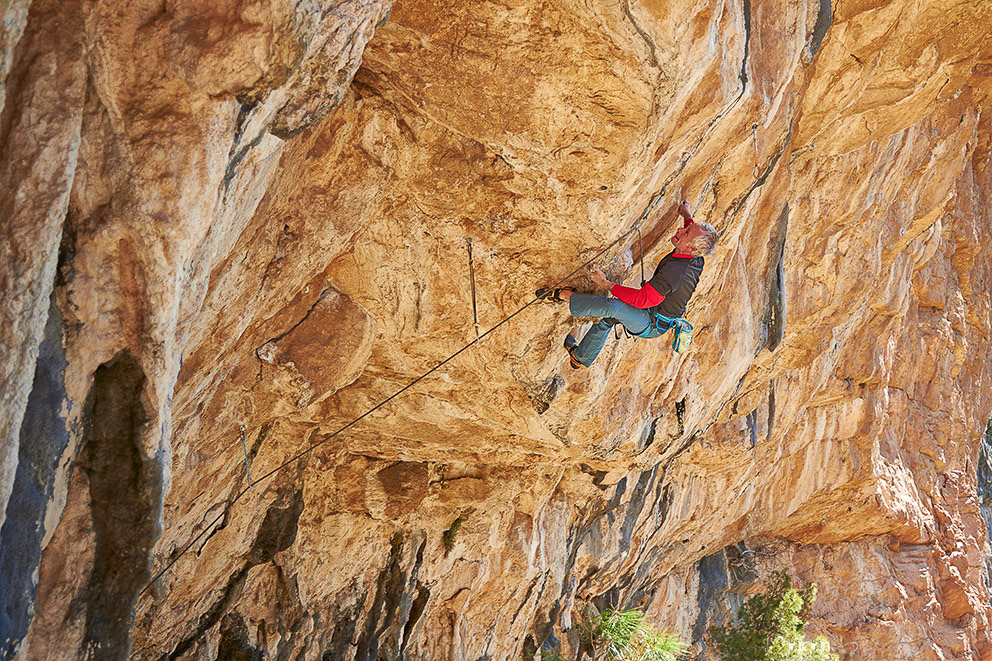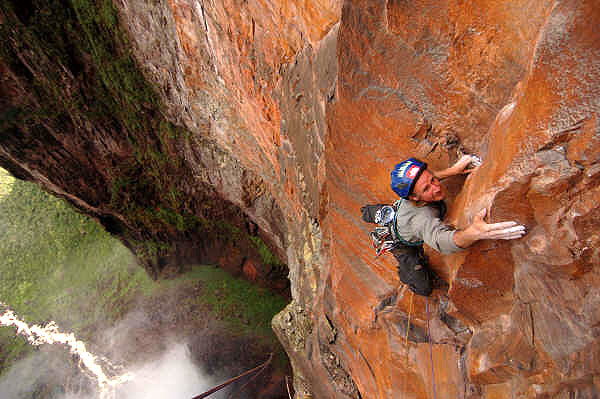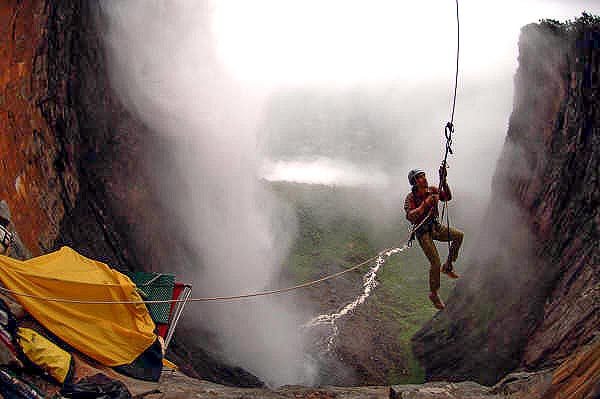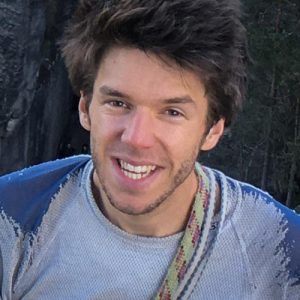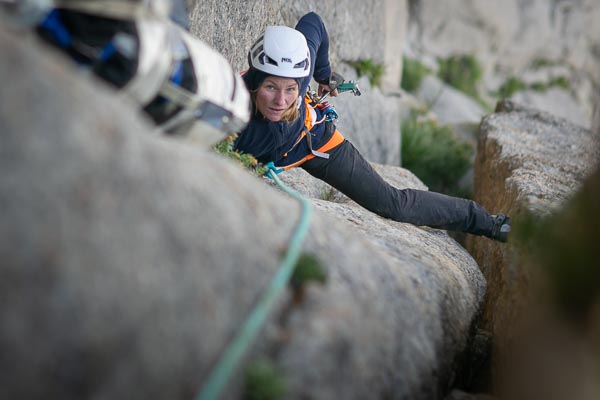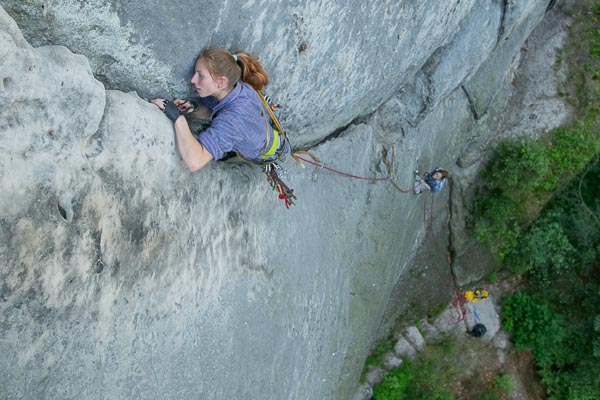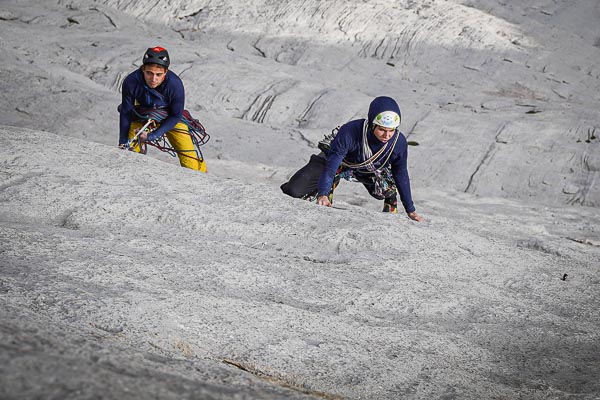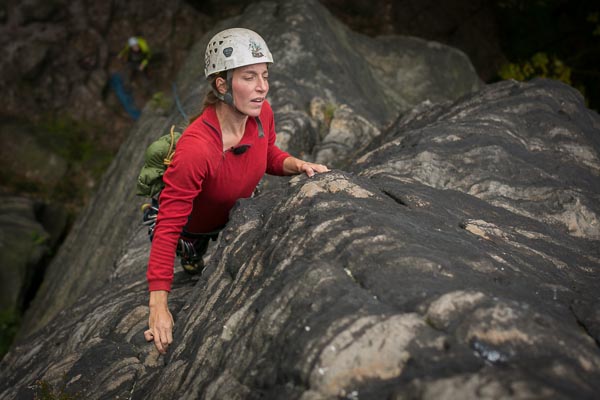TONI ARBONÈS
Güllich, Steck, Edlinger, Huber, Hirayama… “ Wow, I can see them climbing! And they can become my friends.” When young Toni Arbonés started climbing in the 90s, he was stoked beyond any measure. “No food? No problem. The only thing that mattered was spending time at the crag.” Not much has changed since then…
INVENTOR OF PARADISES
“Someone just called me from China. They told me to move over there for two years and develop a huge climbing area. They even offered plenty of money.” Toni was pondering his future last year, when the author of this article met him. It’s evident that Toni’s crag “developing” skills have become legendary all around the globe. In the end, he decided to turn down the Chinese offer, choosing to stay closer to his family and the local crag.
Toni was born in 1967 but he has the energy of a stoked hyper guy in his twenties, who cannot help but cause mischief all the time – give that 8c some tries, shoot some arrows with his daughters, run an ultra, bolt some lines, cycle all the way from the sea to Mt. Blanc and run up it… He doesn’t do it too often today but he used to do bigwalls as well – for instance, he has climbed the “Eternal Flame” at Nameless Trango in Pakistan…
He is based in Siurana, Catalonia. He dedicated his entire existence to this little paradise and became one of the central figures of the local climbing community that turned the natural paradise into a climbing paradise as well. Toni has already bolted around 500 lines in the area, invited some of the climbing celebrities from all round the world, became friends with many of them and opened a local refugio with climber-friendly camping. “This is not the kind of business you would get rich from but it allows me plenty of time for climbing, bolting new lines, running, and biking… Such work also grants me enough time for my family. I’ve managed to reach a lifestyle that makes me happy even after all those years.”
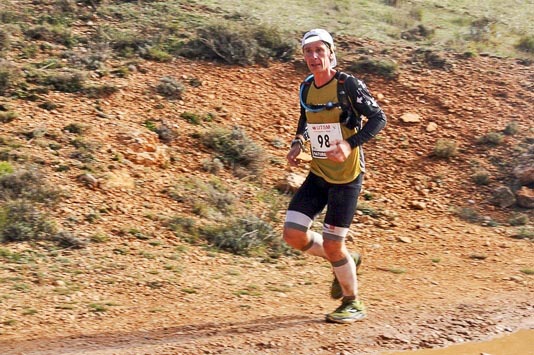
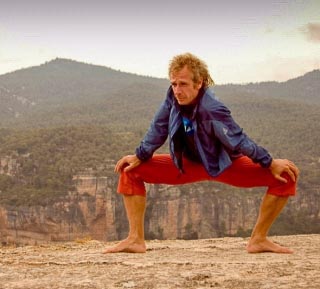
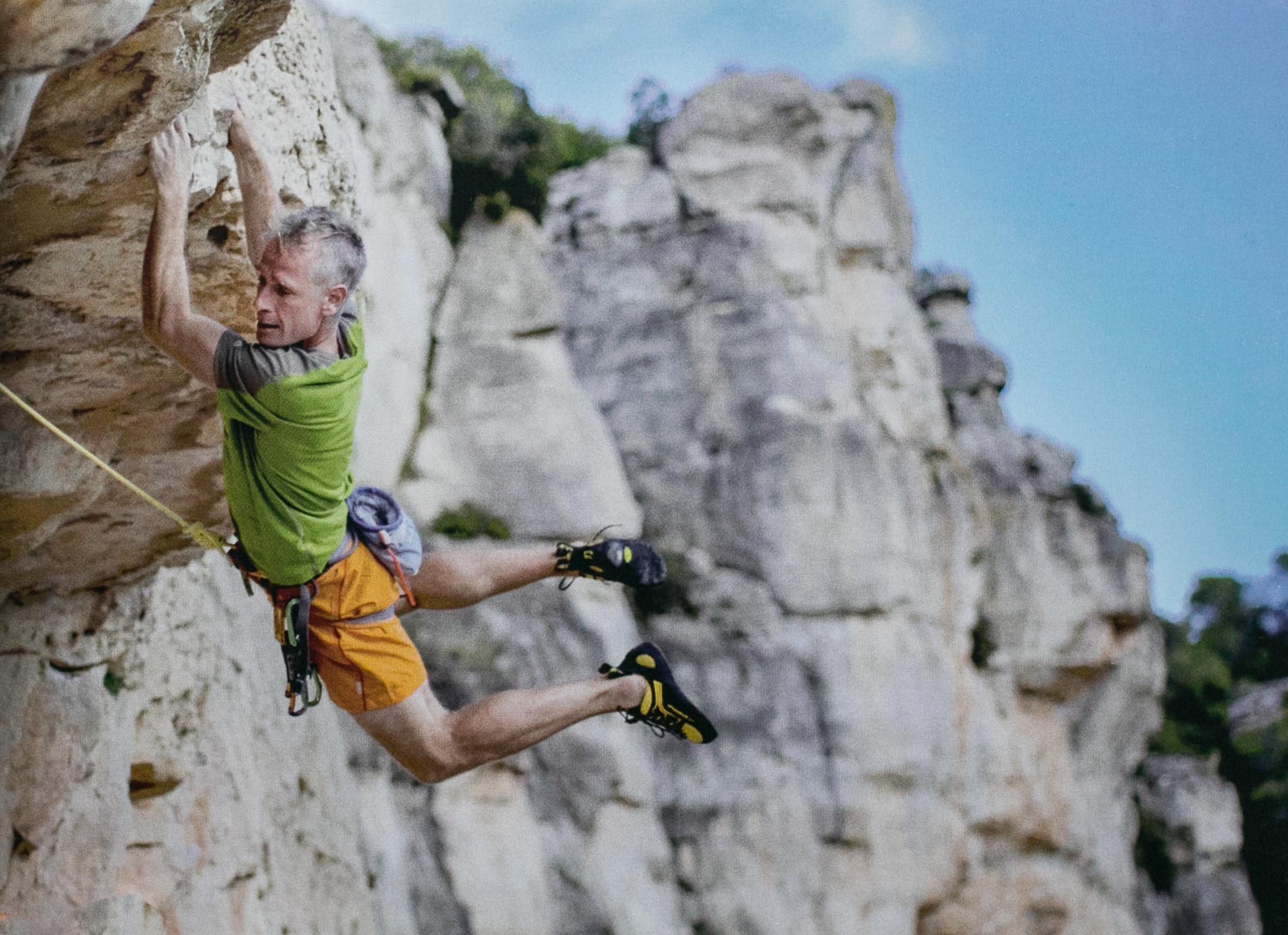
THE CASTLE CRAG
How long did it take you to establish the campgrounds?
I’ve been operating it for 21 years. I came to Siurana in 1990 and spent some years working in the local Refugiu, which we later turned into a bar. It used to be an entirely different world back then – there was six neighbours living in the village, no paved road up the valley, no water during the summer… Everything was different.
How many climbers came in the year 1990?
There was a small group of locals that kept growing – suddenly people from all around the world started coming here. The area had great potential to become a dream crag. We used to climb only druing our ‘season’ – in the spring and autumn. In the winter, we usually went climbing to the south of Spain because Siurana used to be quite cold. During summer, we did not climb at all. The weather used to be very different – winters were really cold and summers hot.
How was it with the bolting back then?
At first, I was really stoked about first ascents. But I usually managed to bolt only around 25 lines a year. I worked only on my own projects and personal challenges. After a few years, I became truly obsessed with bolting and I started drilling hard… hundreds of routes every single year. Not only here in Siurana, mind you.
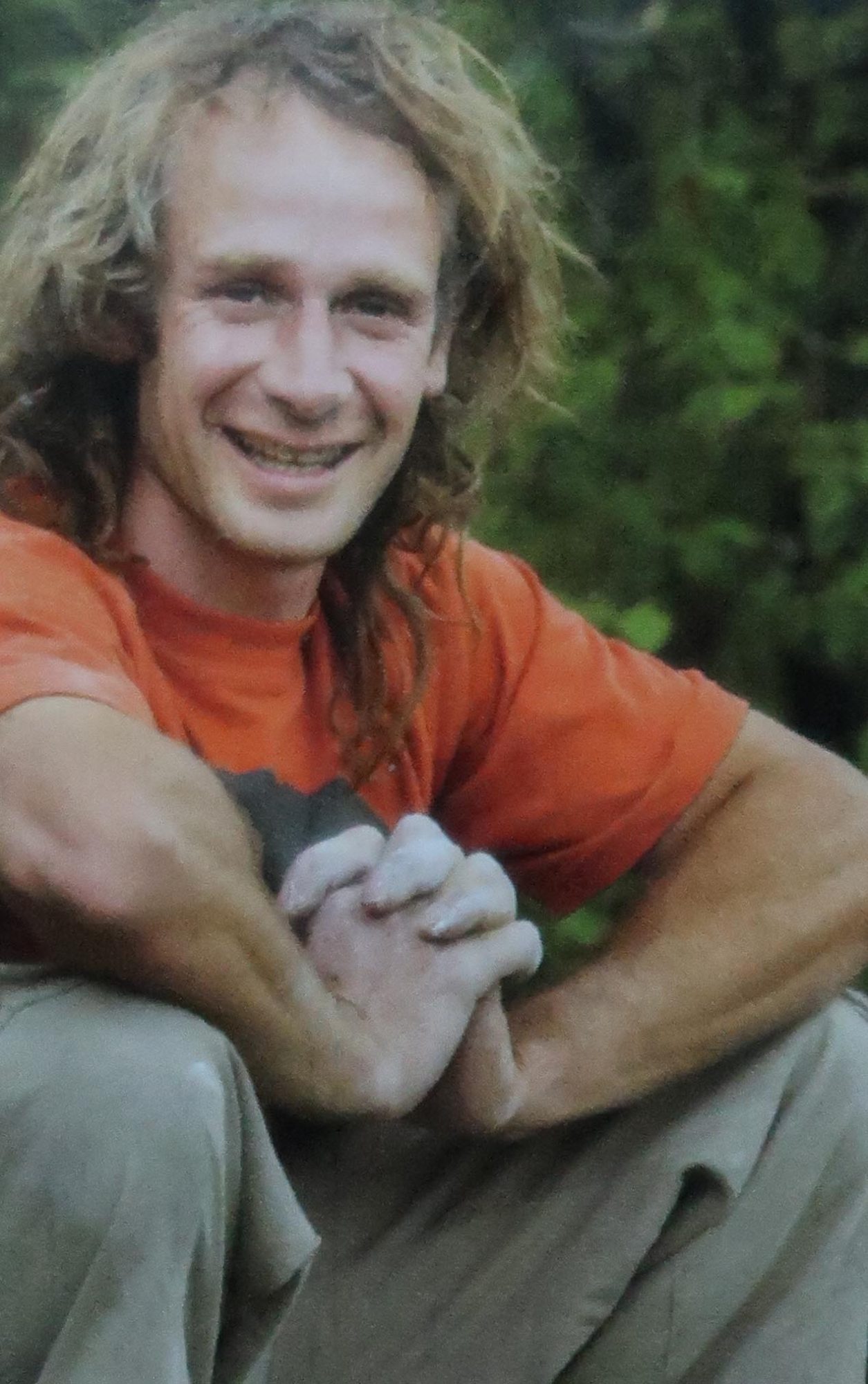
challenges.“ (p: TA archive)
Did you use electric drills in the 90s?
Yeah, we had some basic ones but the batteries used to be quite weak – one could rarely bolt an entire line on one battery. We also lacked funding. Bolts were expensive, and that’s why we had bolted our own projects rather than “routes for the public”. One of the remnants of those time is my route “Cleptomania” (7c). I made it entirely from the bolts I got from my friends. Each bolt in that line looks different – up to this day. (he laughs)
Where is that route located?
In Can Piqui Pugi sector. I spent four years climbing in this sector only. I bolted a line, climbed it, then bolted another one… It took very long! At the beginning, we used to climb only here – nearby the village in La Trona sector, because there was so much potential here… “Why go far?” we used to think.
The area expanded only after Alex Huber came in 1994 and looked at the other side of the valley, where he bolted “La Rambla” (graded 8c+ by Alex but climbers usually log it as 9a+ today). I went there with him and belayed him for two months. The experience opened my eyes. We have also drilled some other lines together including the endurance line “Kale Borroka” (8b+). Until then, we usually made routes with around 6 to 8 bolts. We had never dreamed of making routes including over 15 bolts. Wow. Suddenly, our bolting style changed entirely. Especially when a Swiss climber Elie Chevieux came and sent all our classic routes onsight. (He was the very first climber who did an 8b+ OS.) Later, more strong climbers started coming including Yuji Hirayama.
MY HEROES
So was it the visiting climber who have inspired you the most?
Sure, it was truly inspiring for me to get a chance to climb with my heroes. I befriended guys like Kurt Albert and Ueli Steck… I also climbed with Wolfgang Güllich, Dean Potter or Patrick Edlinger. As a twenty-year-old climber I was really living my dream: “Wow, I can see them climbing and we’re friends now.” I was psyched like never before. I spent all my time climbing. I didn’t care that I have no food. I even ate some local flora. My sole motivation was to stay in the rocks for as long as possible.” These were my passionate beginnings.
Later, after 2000, when I built the camp, my father and mother decided to move in to Siurana and help me. Thanks to them, I could spend more time working and climbing in the area. If we hadn’t invested so much time into the development of the area, it could have ended up like Kalymnos or Thailand. Those I see as the areas “bolted for tourists” that became “holiday destinations”, where climbers do not go to challenge their limits. They travel there to climb some good numbers and chill. On the other hand, in Siurana, you can feel the history and the spirit of real climbing.
„In Siurana, you can feel the history and the spirit of real climbing.“
.
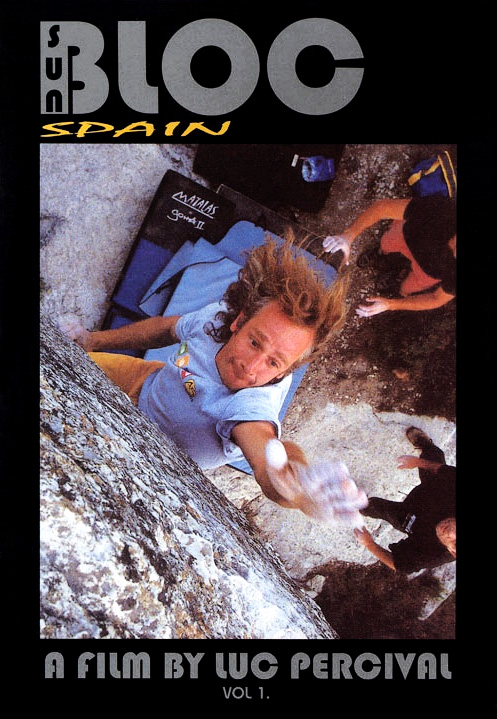
Does the author of the project have the privilege of finishing their line as the first climber?
When I started climbing here, there was already around 40 lines. 20 of those were merely bolted and none of us could actually climb them. So we decided to invite climbers from different states to come and try them. You bolt a route and invite people… That’s the Siurana spirit. When you’re getting really close to actually finishing your project, the others usually respect it and give you enough space to work on it. But sometimes, strong cats, such as Dani Andrada come and send it before yourself. That can drive you a bit mad but I do not take it personally anymore.
By the way… what does it feel like, being the employer of our own parents?
30 years ago, when I was leaving for Siurana, my dad told me: “My boy, what on earth are you going to do there? It’s a dead town. No one lives there apart from five pensioners, who are just walking their dogs and do nothing…” Yet, I think that my parents found happiness here after all — they do not work anymore, spend enough time outdoors, can always work on their own little projects and talk to youngsters… They used to live in Barcelona, where my brother lives, but after all, they got bored by the city, and so they moved on.
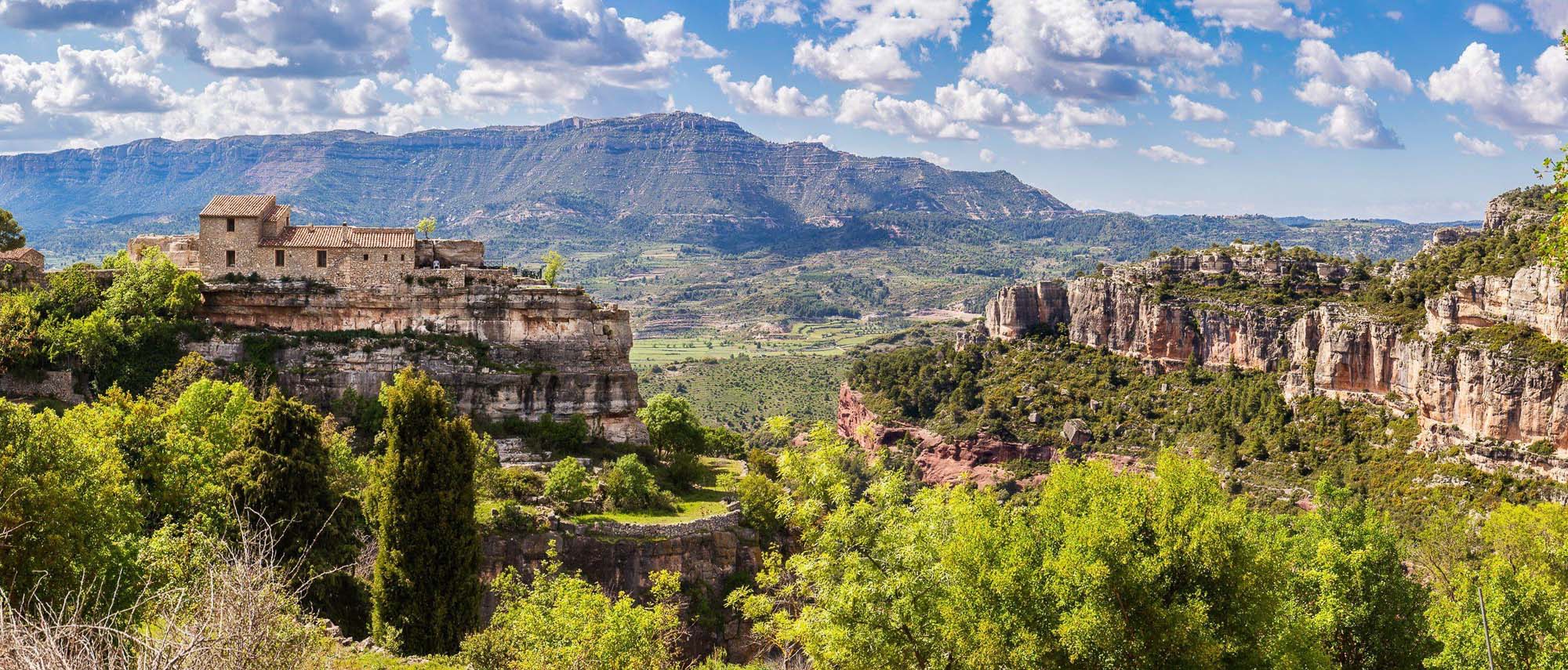
ROUTES VS. HOLDS
How many days a year do you climb?
Around 300. But now that the winter is here and days grew shorter, it’s harder for me to get enough climbing time. Plus my family needs me more these days. I feel like life is all about juggling. You keep juggling but as you grow older you have to deal with more and more balls. At first it was only two balls – climbing and friends. Then the work, camp, family, loans, doctors… Damn! I think I’ve managed to climb and bolt so many routes only thanks to the fact that I live so close to the crag. I can go climbing even if I have only two hours of time.
People keep telling me: “Toni, you live in a paradise!” And they are right – it already used to be a natural paradise, but it has recently turned to a climbing paradise as well, and I am proud that I was part of that. I have spent thousands of hours cleaning and bolting… I’ve made around 500 lines here. Sometimes, a route takes me five days to finish, sometimes just a few hours…
Is there any type of routes you like and dislike?
I generally enjoy endurance climbing. I’m not too much into those bouldering routes, to be honest. But I do enjoy lines, where you have to show that you’re able to link some unpleasant precision moves without a mistake – as in “Mandragora” (7b+) or “Papagora” (7b+). And something I do not like? Well there is this bloke now that keeps bolting so many easy routes. Maybe, it could be the future of Siurana? But I still don’t enjoy routes pushed in between logical lines… I also feel that some of the young climbers do not see the natural lines, only the holds and thus make all sorts of strange linking routes…
Have you got a top three list of routes in Siurana that would follow such natural lines?
“Kale Borroka” (8b+), that’s a classic, my favourite… Then “Pren Nota” (8a) and as the third comes the aforementioned “Cleptomania” (7c), that one is nice!
„Life is like juggling. As you grow older you have to deal with more and more balls.“
SANDSTONE VIBES
I noticed that some years ago, you started bolting routes in the lower level of the Siurana rocks.
I started some already in 2000 but it was only around six routes and the rock quality was not ideal. But two or three years ago, I came back. There was one line that lured me in particular – the route looked amazing but I had my doubts. I tried it after all and bolted the line. “Wow!” It turned out to be a perfect 7c! And the rock was solid enough to hold me and I didn’t break a single hold. “If I’m able to climb this one, then the surrounding lines should work as well,” I told myself and bolted around 50 routes in the sandstone in the last two or three years. I realized that sandstone can be climbed well even when it’s warm. When it’s hot, it doesn’t ruin your skin as much as the local limestone. The only problem is that sandstone is softer and tends to break more easily when the air humidity increases.
You told me that you already tried climbing on Czech sandstone, is that right?
I went on a European tour with a bunch of acrobats during which I visited Prague. I think it was in 1997.
Well, I remember that we went climbing in the Elbe sandstone area with a large group of climbers. We placed slings and clipped the rings high above the ground. We even tried towerjumping, during which one of my friends broke her leg. I also remember that I was sitting in a sling at a ring and one of my friends had to crawl onto my shoulders to reach past a dead end in the route. It reminded me of the “human pyramids”, which is a sport that I’m practicing with one of my daughters. Locally, we call it “castell”, and it’s quite popular here in Catalonia, let me show you a photo:
In the picture, you can see the big human pyramid in Cirdunella. This is my daughter (he points to the very top of the pyramid) and this is me (in the second visible row from the bottom on the left). Somewhere down there, there’s my wife Miriam as well. We managed to build it during a local festival after 30 years since the last attempt. We practiced twice a week and during the weekends as well. Practicing all the time. Honestly, it felt almost like a prison to my family. But we’re not taking it so seriously anymore.
INNER ENERGY 8a+
I’ve heard you also made a trad route in the Racó de Missa area in Montsant…
Yeah, I’ve named it “Qi”, which is the ancient Chinese name for your inner energy. It’ not all trad, though, there is one bolt at the anchors in the middle. It has 50 meters. First, there’s a BD 6 offwidth, then a nohand rest and then around 18 meters of a very wide crack. I usually use the nohand to haul up some additional protecion and then I send the last bit in one go. It’s overhanging a lot so I first practiced it on Top Rope. There’s a good placement for a yellow friend in a pocket but as the rope moves around, it always loosens it until the friend falls out. “Damn, how should I do it?” I told myself… but then I found a hole big enough fr three small BD friends in a row. “Sure, that’s going to work!” I rejoiced and finally went for a full send. I climbed it and as i was being lowered down, the three friends fell out again. Under them, there was a small tricam and even lower the BD size 6. Well, what the hell… I think that no one has repeated the route yet. But it’s a beautiful natural line… 50 meters of pure overhanging climbing. (Graded 8a+, more info here.)
What is the highest grade you have ever climbed?
Around seven years ago, I climbed a 60-meter endurance route called “Antagonista”, which is located in Montsant as well. There are plenty of strength-demanding moves in pockets and it basically leads through the most overhanging bit of the sector (see the video).
And around 14 years back, I did an 8c+ top rope. If we’re talking OS, then something around 8a. To be able to climb OS well, you have to travel a lot (Toni climbed 8b+ when he was 53 and this year, he’s close to finishing another 8c. So far he’s done it only with a single fall.)
What about climbing style, which ones do you prefer?
For me, climbing is all about the movement itself. Sometimes, I even climb top rope and I don’t mind. I don’t really cling to climbing styles. It’s all about the context and the mood. Sometimes, I like to climb my multi-pitch in a single day, othertimes, I follow some leading climber and I’m completely happy as well. Sure, RP climbing is the best, but I do tolerate all sorts of styles. One thing I don’t like is when people extend the bolts in the sport routes by slings and clip both the sling and the bolt. If you’re leading the route, you should clip each bolt only once.
When I’m climbing a trad route, I count it finished only when I place all the protection, climbing ground-up. British headpointing style, in which you first practice top rope and then you do one final attempt ground-up, is ok for me. But no pre-placed gear during your final attempt.
Sure, when I did that 8c+ top rope I had to try and red point it as well but I did not succeed. It was too near my limit and clipping the bolts was too much. Anyways, I’m still happy about that top rope climb since that was in 1999 and I was one of the first guys in Spain to climb anything like that. I still see it as one of the proud moments in my sport climbing history.
Most people would tell you: “Top rope means nothing.” It might be the case for them, but for me, that moment was truly valuable. Someone else could say: “I’ve climbed an 8a trad.” And judging from the photos, you can see that they pre-placed their protection. Prepared, tested, doubled… That’s not a real trad, though. When a climber admits the details of such a style, I have no problems. It becomes more problematic, though, when the goal is to “sell” the activities to sponsors. That often leads to embellishing or skipping the important details of the story. When you’re not selling anything, you can afford to say the bare truth.
„When you’re not selling anything, you can afford to say the bare truth.“
TRANGO, ANGEL AND OTHERS
What are your goals right now?
Currently, I mostly have goals outside of climbing. One of my latest projects is to get to the summit of Mt. Blanc all the way from the sea – on a bike. I’ve already done Pico de Aneto (3 404 m.a.s.l., the highest peeks of the Pyrenees) from the sea in 23 hours. It was 360 km on a bike and then around five hours of walking finishing on a glacier.
Did you have crampons?
I did not, and that was the issue. The top was horribly icy. I climbed the final section during the night, using stones instead of ice-axes. Wow, that was exciting! But descent wasn’t too much fun. It was terribly slippery. Too crazy, to be honest. When I got back down safely, I went straight to the mountaineering shop and bought myself a pair of crampons for the next trip. (he laughs) Right now, I’m practicing for my Mt. Blanc project. I want to approach the mountain from the Italian side of the Adriatic sea. It starts off with 700 km on a bike. (Toni is quite successful as an endurance athlete – in 2009, he placed third during the famous Ultratrail de Mt Blanc.)
What is your relationship to the mountains? Climbing-wise. For instance, I know that you have been to the Nameless Trango Tower in Pakistan…
Yes, I climbed the “Eternal Flame” route there (the first ascent was done in 1989 by Kurt Albert, Wolfgang Güllich, Christof Stiegler and Milan Sýkora. The route was originally graded 7b+ A2, 650 m) I went there with two strong Swiss guys (Denis Burdet and Nicolas Zambretti) and we managed to freeclimb the line. We spent around 18 days in the wall, and we slept at the “shoulder”, which is a classic bivouac spot. We built a bivouac and waited for better weather. Kurt told me right before then expedition: “There are two pitches, in which we had to do some technical moves and you could do them freely.” So that was our goal, and we did it. Then Huber brothers came to give it a try as well and they managed to freeclimb even the ropeswing pitch (video). We didn’t even try that one. Kurt told me that freeclimbing a swing pitch is not that important. We focused mostly on those two pitches – they are in the altitude of around 6 000 meters, one is graded 7c and the other one 7c+. We spent so many days practicing the pitches and our final attempt took us three days. (The ascent took place in 2003.)
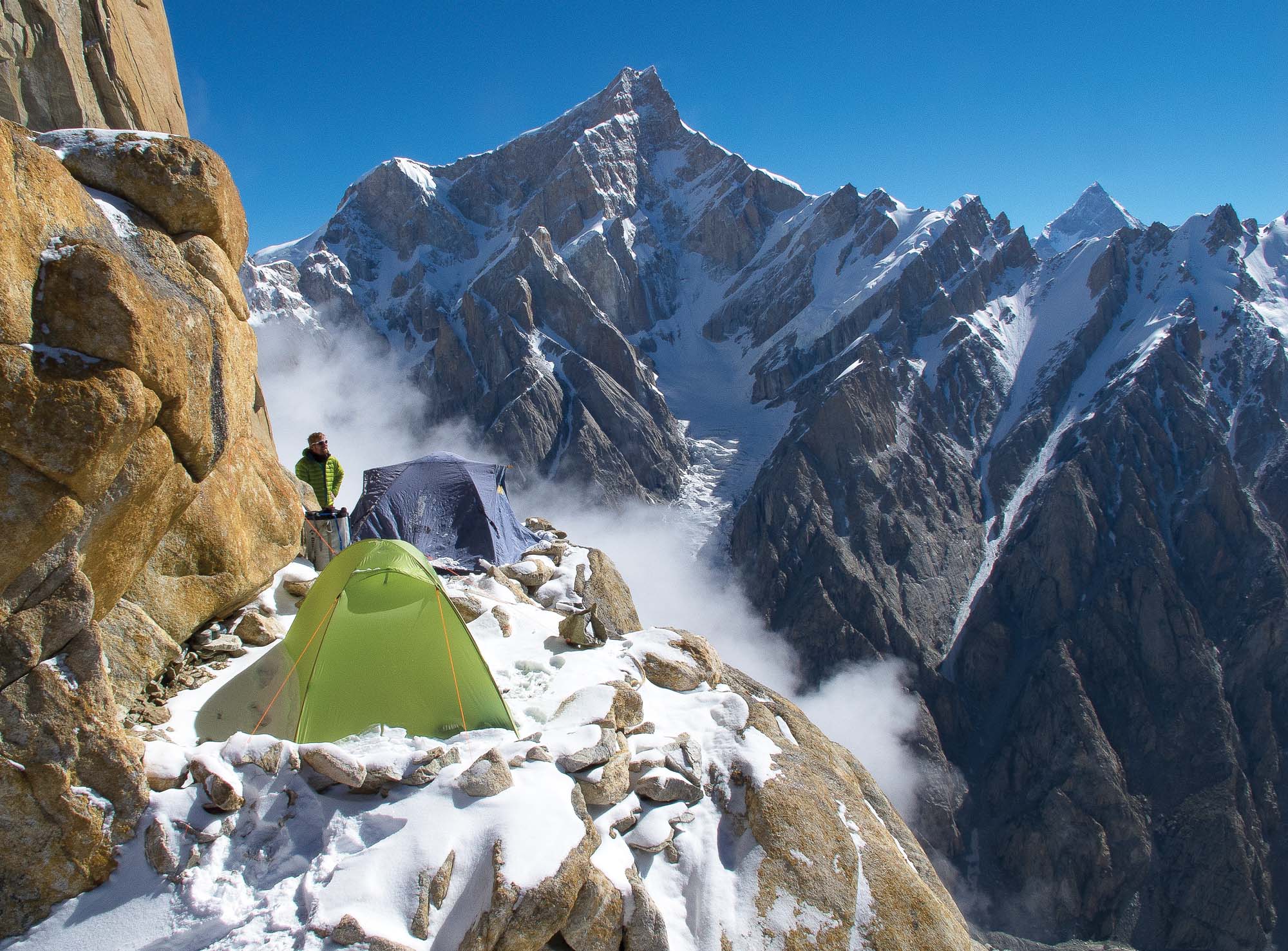
Anything else you remember from that project?
It was an amazing expedition. We pretty-much ran up the wall – up until the key pitches, we managed to send everything OS up to the 7b+. Then we got to the bolted ladder (7c pitch). We tried but failed to freeclimb that pitch. Some parts were wet and it was quite difficult at first. Our party was made of three climbers – one of them was an alpinist and the second a sport climber. We made quite a team, even when we started running out of provisions towards the end. The boys were always laughing, never stressed… They actually taught me mixed climbing there. “There’s some ice in the crack,” I shouted in surprise at Denis, when I first saw it. “Well, chalk up, Toni,” he joked. He’s just used to the winter… I think that Trango and Salto Angel are my best big wall projects so far.
“There’s some ice in the crack,” I shouted.
“Well, chalk up, Toni,” he joked.
.
Who did you climb with on the Salto Angel line next to the waterfall?
I was there with a group of French climbers – Arnaud Petite and his team. It took us 16 days. (The trad route “Rainbow Jambaia”, 900 m 8a.)
What are your memories of this line?
It felt like an army camp!
You mean thanks to those problems you had with the Venezuelan soldiers?
Every single day, you woke up and heard the orders: “You’ll do this and that and will lead that and that pitch.” Those weren’t soldiers, though! It was Arnaud! (he laughs) “Why couldn’t I climb this pitch – I like it!” But no such luck, he was our leader. “Stop eating, let’s climb on boys!” That was already a bit too much. The Trango expedition had entirely different atmosphere. That was a real climbing team – when I fell out of the crack, they lowered me to the anchors straight away: “Why are you lowering me?” They replied: “Because we want to do a team-onsight. The summit is not that important – we’re eventually going to get there.” Those were real alpinists. Entirely another level.
A CRAZY FOREINGER
What is the most important route you have bolted?
It was probably the route at Madagascar called “Vazam Tap Tap”, which means “Crazy foreingers” in the local language. That is a truly amazing route. Everybody who repeated that line told me that it’s climbing in an entirely different dimension.
How hard is it?
One pitch is around 8a+, some are around 7c and the rest is around 7a or 7a+. It leads through a corner, which is colored pink, orange or fluorescent green. It’s so beautiful even to look at! You’re climbing through an amazing granite wall, which has quite an unusual structure – all the holds, flakes… Just fantastic! Some people go there just to try the route. It’s a bit of a pity, though, that some of my local friends put lower quality bolts that tend to rust quite quickly into the first two pitches. The rest is bolted with stainless steel. After they finished the first two pitches, they phoned me: “Hey Toni, we’ve found an amazing thing, you have to come as soon as possible!” So I did and we finished the route in 20 days. The route is around 650 m long and I think that we made it around the year 2000. I already had some funds thanks to the camp in Siurana back then. (Toni has also developed around 100 routes in Taghia, Morocco, where he helped to build a refugio for climbers, editor’s notice)
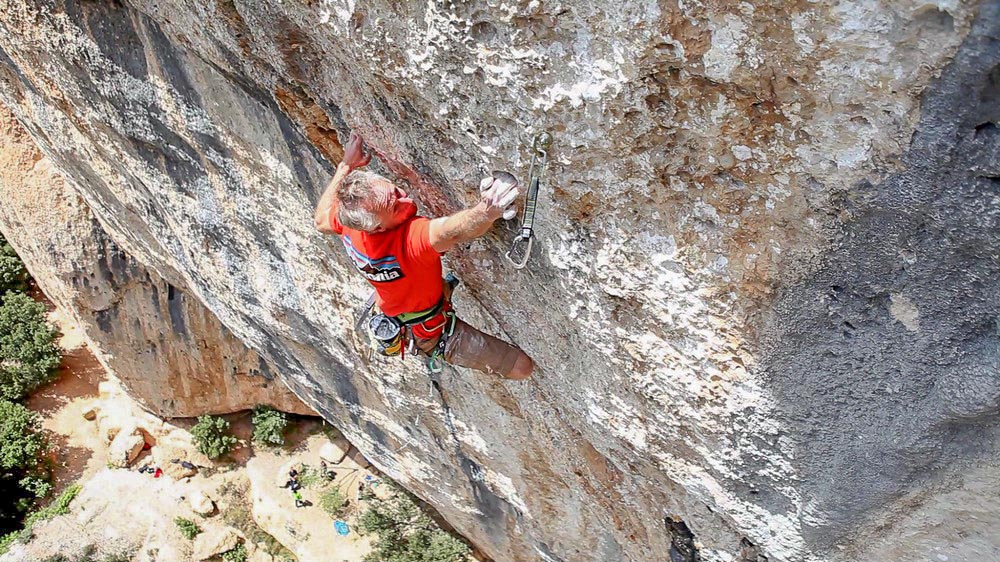
Does somebody sponsor your bolting in Siurana? In our country, for instance, there is a climbing union, which provides the route developers with substantial discounts.
We’ve got nothing like that. But the limestone is hard enough for us not to use the deep, glued bolts so it’s much cheaper. Material for one route usually costs around 25 euro. It used to be more problematic, as we have already discussed. I fund the routes from the camp and guidebook revenues. At first, I had to print the guidebooks in large volumes, around 3000 copies minimum, to keep it economically viable. That wasn’t easy. But if they didn’t sell, you could eat them as well. (he laughs) Fortunately, I can print in much smaller batches now and I can update it more often.
So how much do the routes cost you a year?
When I add up all the numbers, I usually spend around 2000 euros a year just for bolting. But I don’t want anybody to fund it – it’s my passion, my “art“. Opening new lines is my way of expressing myself. I like making babies as well, but one can have only so many, so I rather focus on making new routes. (he laughs) This is the way I create, the way I express my happiness and overall approach to life. So if I ever go to Czech Republic again, you’d better watch out, I’ll be looking for some free lines. That’s just me – I might be a bit crazy, but that’s what climbers are, right? (he laughs) We don’t mind rules and regulations and we especially like to break the silly ones…
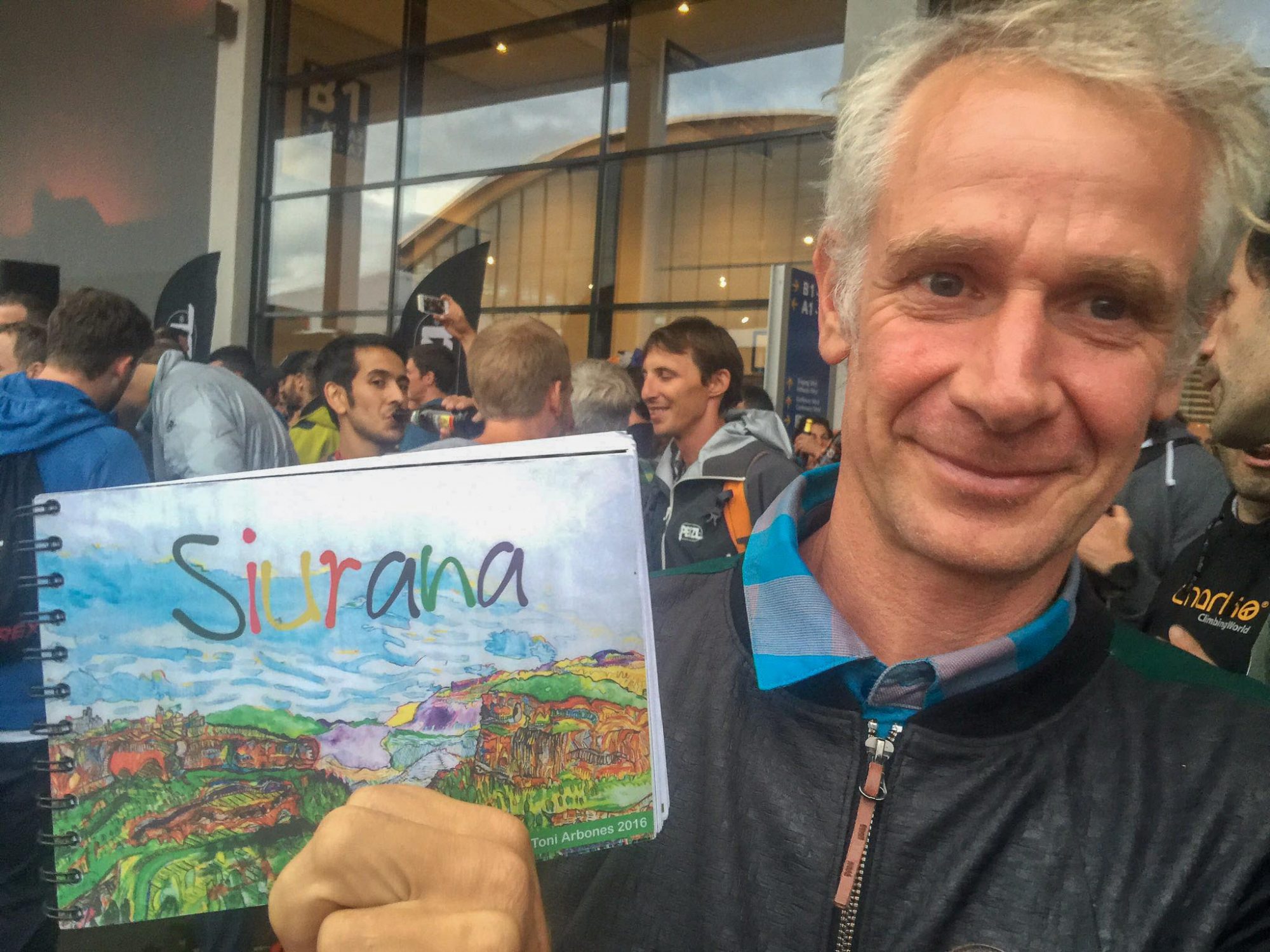
__________


